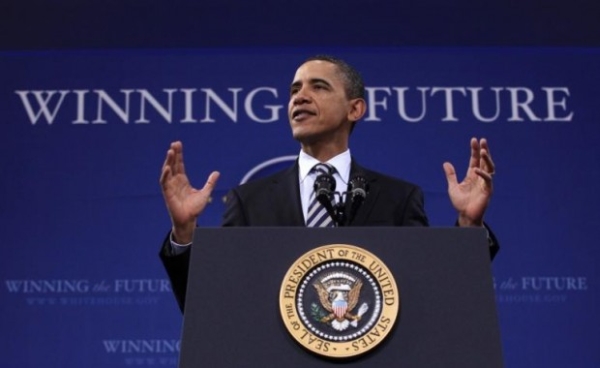
Edmar Bacha: O Brasil é um gigantinho em termos de PIB e um anão nas exportações (Foto do site do Estadão)
No atual debate político econômico brasileiro, poucos têm posição tão clara como o economista Edmar Bacha. "Não é segredo para ninguém que sou tucano", diz ele. Um dos pais do Plano Real e hoje diretor da Casa das Garças, ponto de encontro carioca reservado às discussões de temas de interesse nacional, Bacha defende que o novo governo vai precisar impor um "desafazimento" da atual política macroeconômica e lançar as bases para uma abertura comercial de longo prazo.
O jornal O Estado de S. Paulo fez uma longa entrevista com Edmar Bacha cujo conteúdo se pode tipificar como as linhas gerais de um plano de governo na área econômica. E por isso surge imediatamente uma indagação: Por que brasileiros inteligentes, competentes, estudiosos e educados com o professor Edmar Bacha, são descartados?
A entrevista está muito interessante. É também uma ótima aula de economia, já que Bacha foi professor da PCU-Rio, por muitos anos (não sei se ainda é). E, como professor, sabe explicar as coisas complicadas com exemplos simples. A ilustração do “reclame” Regulador Xavier neste post tem a ver com a entrevista. Bacha é irônico bem humorado, porém extremamente elegante e respeitoso na formulação de suas análises e na defesa de seus pontos de vista.
Por tudo isso, recomendo que leiam com atenção. Ao final dou o link para a leitura completa da entrevista. Leiam:
No evento que marcou os 20 anos do Plano Real, na semana passada, o senhor disse que no primeiro dia do novo governo seria necessário retomar a reforma tributária. A agenda se resume à reforma?
Edmar Bacha: Não. Com certeza é mais ampla. Eu parto de um diagnóstico, com uma sequência de pontos. O primeiro ponto é a constatação que estamos presos na chamada armadilha da renda média. Desde 1981, o Brasil vem tendo um crescimento medíocre. Esse processo parecia ter se alterado a partir de 2004. Porém, fica muito claro hoje que o impulso adicional que a economia teve entre 2004 e 2011 foi fruto único e exclusivo da bonança externa. A alta dos preços das commodities (matérias-primas com cotação internacional) e a enorme entrada de capital nesse período propiciaram e financiaram um extraordinário aumento da demanda interna. Como havia no começo do período uma capacidade ociosa acentuada e um desemprego alto, isso permitiu, durante esse período da bonança até 2011, que o País crescesse mais do que vinha crescendo no período anterior. Com a reversão da bonança, os preços das commodities começaram a cair e o fluxo de capital, por circunstâncias diversas, se reverteu, e voltamos aos pibinhos. Associado a esses pibinhos vem algo peculiar. Se temos pibinhos, deveríamos ter inflação baixa. No entanto, ao contrário, estamos com inflação elevada para os padrões dos nossos vizinhos - com exceção de Argentina e de Venezuela, que ninguém mais leva em conta. Há também déficit externo, quando pibinhos são associados a superávits comerciais. Esse conjunto denota que a economia brasileira tem uma enfermidade. Estamos diante de uma doença brasileira, que se forma pela associação de baixo crescimento, alta inflação, déficit externo e, para compor o quadro, desindustrialização. O que se constata é que o pibinho não é produto do atual governo, não é cíclico. É uma característica da economia brasileira há 30 anos. Uma característica quase secular - o País tem limitações para fazer a transição para o primeiro mundo.
Qual o segundo ponto do diagnóstico?
Edmar Bacha: O segundo ponto é o que se vê quando listamos os países que, no pós-guerra, conseguiram fazer a transição da renda media para a renda elevada. Não foram muitos. Na minha conta, foram uns dez. Os Tigres Asiáticos e Israel fizeram a transição com base na indústria exportadora. Os países da periferia europeia - Portugal, Espanha, Grécia e Irlanda - fizeram a transição com base em prestação de serviços, inclusive com a concessão de mão de obra para a comunidade europeia. O terceiro conjunto de países inclui Austrália, Nova Zelândia e eu também colocaria no grupo a Noruega. Até o final dos anos 1960, a Noruega era o mais pobre entre os nórdicos e agora é o mais rico. Esses três países fizeram a transição na base de produtos naturais. Cada um fez a transição a sua maneira, mas com uma característica comum: todos se integraram a um mercado maior e encontraram nichos a partir dos quais conseguiram se desenvolver. Isso é empírico. A transição ocorreu por meio da integração internacional. Analiticamente, parece claro - para transitar da renda média para a alta renda, o nome do jogo é produtividade. Para todos esses países havia acabado a fase fácil em que se conseguia aumentar a produtividade trazendo gente da cidade para o campo - a fase em que a China e a Índia ainda se encontram. Como o ambiente urbano é mais produtivo que o campo, a mera transição do campo para a cidade, num contexto frequentemente de substituição de importações, permite que se faça a transição da pobreza para a renda média.
(Minha opinião: Não estou certo se esta avaliação do autor reflete bem a realidade brasileira, no entanto, opiniões assim podem ser positivas no sentido de reações políticas. Mas não podemos nos esquecer que o quadro político-econômico-social de um país ou dos países em geral muda o tempo todo, e numa dessas mudanças podemos emplacar. O maior problema do Brasil no plano social, assenta-se em dois blocos: Saúde e Educação, tudo o mais emana desses dois fatores. Um povo culto e saudável sabe cobrar e sabe discutir com o govêrno. Movimentos como os que estão acontecendo refletem bem isso: Um segmento da população tentando impedir a Copa do Mundo no país do Futebol. Sem lógica nenhuma…Numa hipótese de não haver a Copa, os problemas socias não se resolveriam por causa disso. )
Fonte deste artigo:













